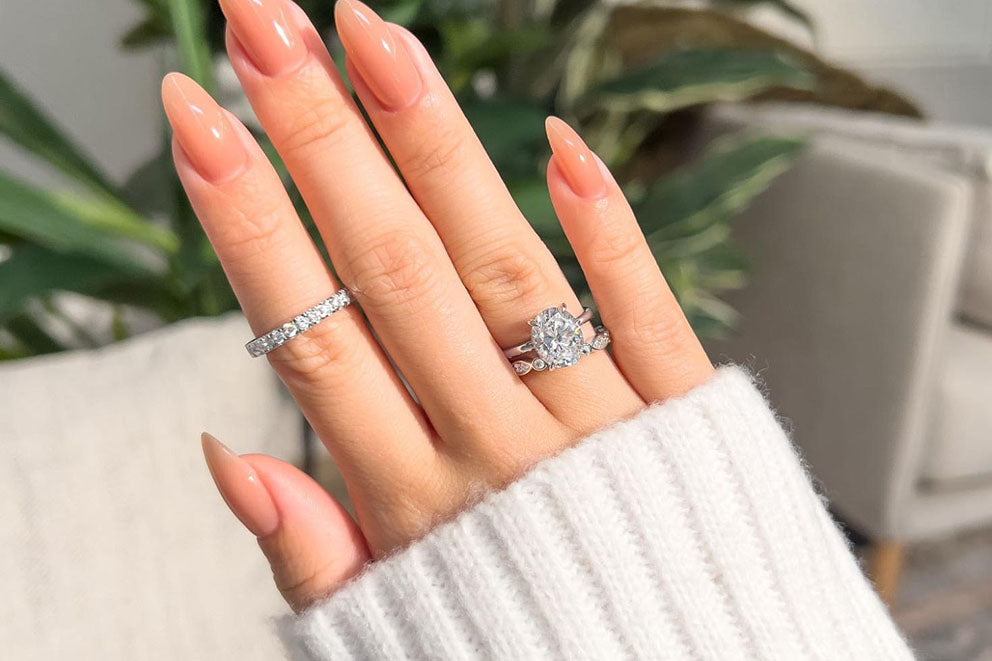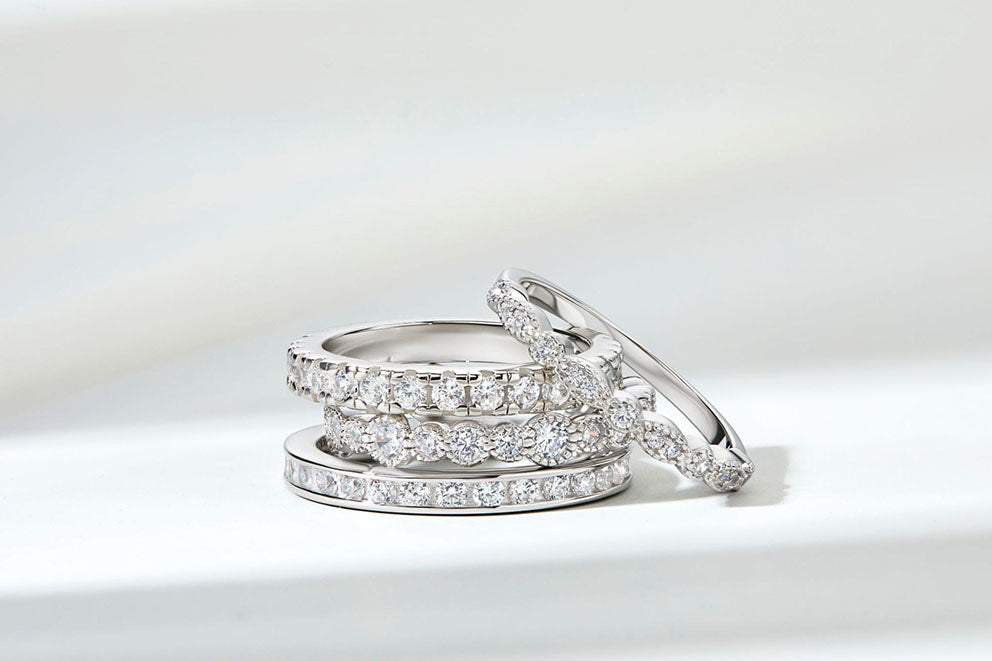Wedding rings symbolize love and commitment and hold universal significance that transcends borders and cultures. While wearing wedding rings on the left hand is common, the world is rich with diverse customs that extend far beyond this convention. So, which countries wear wedding ring sets on the right hand? Let’s take a closer look at traditions from around the world.
Historical Influences
The historical origins of the left-hand ring date back to ancient Egypt, where the Egyptians believed the vena amoris, or “vein of love” in English, connected directly to the heart. This now-disproven belief led to the tradition of wearing a ring on the fourth finger of the left hand to symbolize love and commitment in marriage. Over time, this custom spread to other cultures and civilizations, becoming deeply ingrained in Western wedding traditions. To this day, many couples wear their wedding bands on their left ring fingers for this reason. Religious beliefs and cultural practices have also influenced wedding ring traditions.
Similarly, cultural beliefs surrounding hand symbolism and purity have shaped customs across different societies. In some cultures, the left hand is considered impure or unclean, leading to the preference for wearing the wedding ring on the right hand. However, as societies become more interconnected and globalized, wedding ring traditions are evolving, with couples embracing a variety of customs and practices.
In ancient Greece, the right hand was considered the hand of blessing and power, which influenced many Eastern Orthodox traditions. Today, modern Greeks continue to wear wedding rings on the right hand rather than the left hand, highlighting the enduring nature of these ancient customs. The engagement ring tradition in Greece follows similar patterns, with couples often choosing to wear both their engagement ring and wedding band on the right ring finger.
When couples from different cultural backgrounds marry, they sometimes create unique compromises in their ring-wearing traditions. For instance, some choose to wear their engagement ring on one hand and wear wedding rings on the other, creating a beautiful fusion of customs that honors both heritages.

Europe
In Eastern European countries like Poland, Russia and Ukraine, it’s customary to wear wedding rings on the right hand. This tradition traces back to influences from Roman customs and Orthodox Christianity. However, there are exceptions. In Spain, some regions follow the Eastern European tradition of right-hand ring-wearing, while others adhere to the left-hand tradition. With its diverse cultural influences, Belgium showcases a mix of traditions, with some couples opting for the left hand and others for the right. Couples in Italy and France typically wear their rings on their left hand, while those in Austria and Germany are more apt to wear their rings on the ring finger of the right hand.
The tradition of wearing an engagement ring before marriage adds another layer to these customs. In many European countries, the engagement ring and wedding band are worn on different hands during the engagement period. After marriage, some couples stack their engagement ring and wedding band on the same finger, while others maintain the separate placement. This flexibility allows couples to express their personal style while honoring their cultural heritage.
Latin America
Wearing wedding rings on the right hand is common in Latin American countries like Cuba, Peru, Venezuela and Colombia, thanks to Spanish colonial heritage and indigenous customs. In these cultures, the wedding ring is often worn on the right hand from the wedding ceremony onwards, symbolizing the bond between the couple. However, many regions have adopted the left-hand tradition due to influences from Western culture.
Discover Our Everyday JewelryAsia
In India, wedding rings are traditionally worn on the right hand, although many modern couples have abandoned this practice. Factors such as religion, caste and regional customs also play a significant role in determining the placement of the wedding ring. In some parts of India, especially in Hindu traditions, the bride may wear the wedding ring on the right hand, while in others, it is worn on the left. Similarly, in other Asian countries like Sri Lanka, the groom may wear the wedding ring on the right hand, symbolizing his commitment to his bride.
Other Regions
Countries like Norway and Denmark have mixed traditions regarding wedding ring placement. While the left-hand tradition is prevalent in these countries, there are also instances of couples choosing to wear their wedding rings on the right hand. In Norway, for example, it’s not uncommon for couples to exchange rings on the left hand during the wedding ceremony and then switch them to the right hand afterward. There are other interesting exceptions, like the Irish Claddagh ring, which can be worn on either hand, depending on the wearer’s relationship status.
Modern Trends and Adaptations
Many modern couples reimagine traditional ring-wearing customs while respecting their cultural roots, commonly opting for innovative approaches to wearing wedding rings and engagement rings. Some choose to wear their wedding band on their right hand during work hours, especially if their profession involves extensive hand use, switching to their left hand for special occasions.
The rise of international marriages has led to fascinating combinations of traditions. For example, when one partner comes from a right-hand tradition and the other from a left-hand tradition, some couples choose to honor both customs by alternating which hand they wear their rings on throughout the year. This creative approach shows how modern couples blend traditions while creating their own meaningful practices.

Ring Styles and Symbolism
Stackable Wedding Bands
Stackable wedding bands can symbolize various milestones and the uniqueness of each partnership. They come in several materials and designs, and couples often add new bands to their stacks to commemorate significant events like anniversaries and the birth of a child.
Cultural Ring Designs
Different traditions influence not just which hand wears the wedding ring but also the design itself. While some cultures prefer simple wedding bands, others embrace elaborate designs that incorporate cultural symbols. The ring finger, whether right or left, often displays these meaningful elements through carefully chosen metals and gemstones that reflect both personal style and cultural heritage.
Promise Rings
Promise rings symbolize the intention to marry in the future. They are often exchanged as tokens of love and devotion, especially among young couples embarking on a serious relationship. The flexibility of promise rings allows couples to express their commitment in a meaningful and authentic way. Which hand is a promise ring worn on? The left hand is a popular choice, but there are no solid rules.
Conclusion
As we conclude our exploration of wedding ring traditions, it’s evident that love knows no bounds and transcends cultural norms. Whether it’s a traditional wedding band worn on the left hand or a stackable ring set symbolizing a lifetime of shared experiences worn on the right, the essence of love remains unchanged. By embracing the diversity of wedding ring traditions, we affirm the universal language of love that connects us all.
